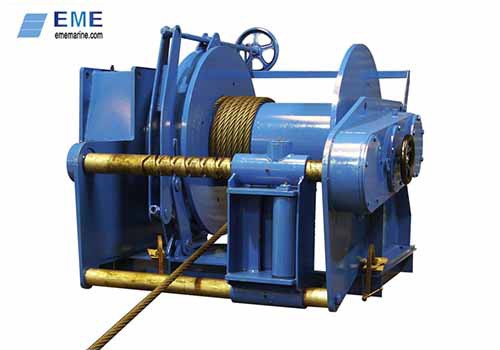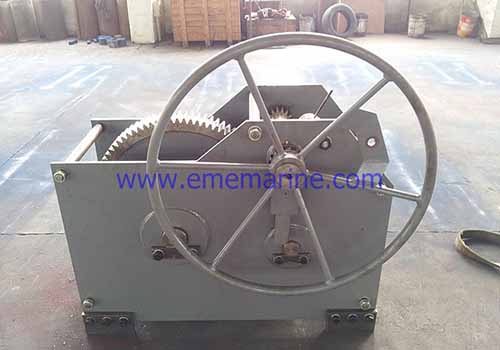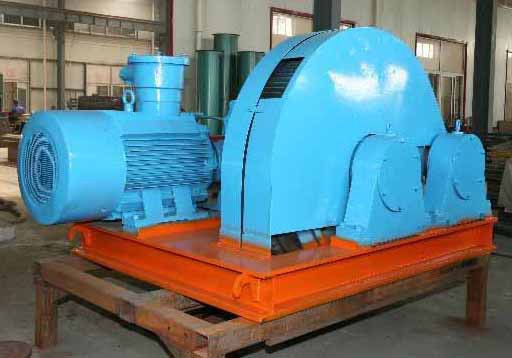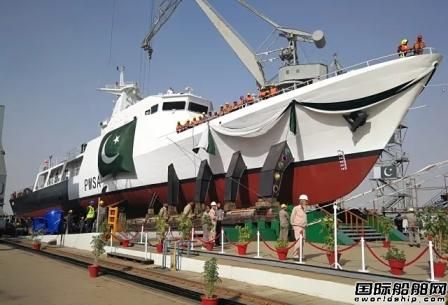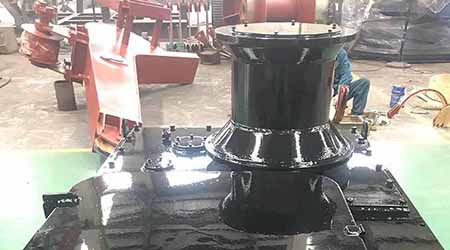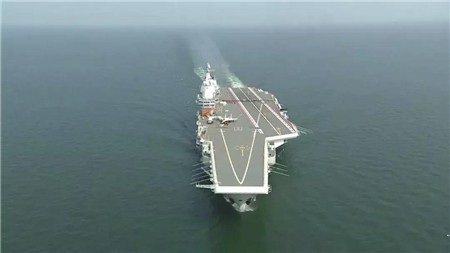
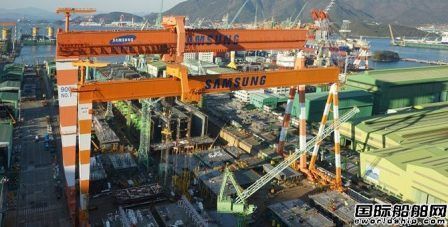
In just two months to receive orders of nearly $5.3 billion, South Korean shipbuilders continue the order taking frenzy at the end of last year, ushered in the best start in four years. This also makes the South Korean shipbuilding industry early to determine the goal - to grab more than half of the world's new ship orders, for the fourth consecutive year more than China to reign as the world's first. This also means that China and South Korea shipbuilding industry order war has started early.
The best start in 4 years, South Korea's three major shipbuilders in the first two months received orders of nearly $5.3 billion
Since entering the new year of 2021, Korean shipbuilding enterprises are starting a different from previous years at the beginning of the year to receive orders "rally", to achieve the opening rush, start sprint.
According to the South Korean shipbuilding industry recently revealed that the first two months of this year, Hyundai Heavy Industries Group, Samsung Heavy Industries, Daewoo Shipbuilding and other three major shipbuilding companies to undertake a total of new ship orders amounted to $5.26 billion, accounting for 17.3% of this year's annual business acceptance target of $30.4 billion.
Among them, Hyundai Heavy Industries Group is responsible for shipbuilding business of the secondary holding company Korea Shipbuilding Marine in the first two months of this year, including ultra-large container ships, VLCC, LPG ships, roll-on roll-off vessels, including 38 new ship orders, the contract amount of 3.3 trillion won (about 2.96 billion U.S. dollars), accounting for about 20% of the annual order intake target of 14.9 billion U.S. dollars. According to the month to calculate, in January to receive orders for 14, 420 million U.S. dollars, in February to receive orders for 24, 1.54 billion U.S. dollars.
Samsung Heavy Industries also took 14 new ship orders including LNG ships, VLCC, ultra-large container ships, etc. in the same period, with a contract value of $1.7 billion, completing 22% of this year's order intake target of $7.8 billion. In addition, there is news that Samsung Heavy Industries also recently received an additional LNG ship alternative order from the Greek shipowner Maran Gas.
It is worth mentioning that Samsung Heavy Industries has received 26 of the LNG-powered VLCCs ordered worldwide so far, which means that Samsung Heavy Industries' global market share in the field of LNG-powered VLCCs has exceeded half, reaching nearly 57%, ranking first in the world in this field, and its global competitiveness in the field of LNG-powered vessels has been widely recognized.
Daewoo Shipbuilding has also made a good start to the year. In the first two months, Daewoo Shipbuilding received orders for a total of six vessels of about 6,563 billion won (about 591 million U.S. dollars), including VLGC and 15,000 TEU class container vessels, reaching about 7.8% of the company's order intake target of 7.7 billion U.S. dollars this year.
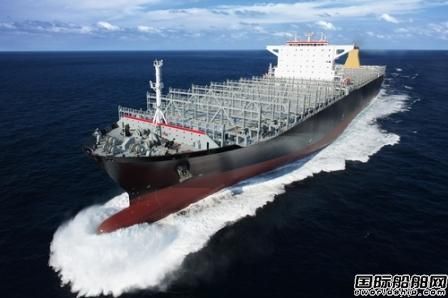
This is the best start to the work of the three major Korean shipbuilders operating order taking in 4 years. Clarkson data show that in the first 2 months of last year, because of the impact of the epidemic Korean three major shipbuilders received orders for only 5 ships 639.7 billion won (about 576 million U.S. dollars), only equivalent to about 5% of the total number of orders received. In 2018 and 2019, when the shipbuilding industry is still in stable condition, the share of orders received by Korea's three largest shipbuilders in the first two months was 14.6% and 16.0%, respectively.
South Korean industry sources said that in the first 2 months of this year, the order taking situation of South Korean shipbuilders is very different from last year. Especially considering the tendency of Korean shipbuilders to concentrate their orders at the end of the year in previous years, some analysts believe that this year's order-taking time is much earlier than previous years. Last year, for example, the three major Korean shipbuilders took about 70% of the total order volume in the fourth quarter.
In 2020, South Korea's shipbuilding industry with the end of the year "a wave" to receive a wave of orders, in the annual order intake finally overtake China, for the third consecutive year to sit on the "world first" throne. In January this year, the Korean shipbuilding industry also changed the "slow" state of previous years and won more than half of the world's new ship orders, with a single month's order intake of 930,000 CGT, an almost 12-fold increase compared to January 2020's order intake of nearly 70,000 CGT, and the world's top order intake for four consecutive months since October 2020. The number one shipbuilding industry in the world since October 2020.
The Korean shipbuilding industry also continues to lead China in terms of order intake going into 2021. According to the latest data from Clarkson, the cumulative order intake of Chinese shipbuilders in the first two months was about 1.906 million CGT, while that of South Korean shipbuilders was about 2.496 million CGT. In January, the order intake of Chinese shipbuilders was 42 vessels of 789,000 CGT, while the order intake of South Korea was 21 vessels of 934,000 CGT.
Good prospects for orders, targeting more than half of global orders this year
The South Korean shipbuilding industry is quite optimistic about the prospect of receiving orders this year. The Overseas Economic Research Institute of the Export-Import Bank of Korea (KEXIM) predicts that the global new ship orders this year will reach 30 million CGT, an increase of 56.9% over last year, based on signs of recovery in the global shipbuilding industry and stricter environmental regulations pushing up the demand for replacement of old ships.
The Korea Export-Import Bank's Overseas Economic Research Institute further predicts that the number of orders received by the Korean shipbuilding industry this year will more than double that of 2020. Based on Clarkson's statistics of 8.19 million CGT of order intake in 2020, this means that Korean shipbuilders are expected to win more than half of the world's new ship orders this year.
In addition, this year, Qatar will also release large LNG ship orders, so this year, the Korean shipbuilding industry's prospects for receiving orders are even brighter. On June 1 last year, three major Korean shipbuilders and Qatar Petroleum (QP) signed a Memorandum of Agreement (MOA) for the construction of more than 100 LNG vessels amounting to 23.6 trillion won, under which the three major Korean shipbuilders will reserve most of their LNG vessel construction capacity for QP until 2027 to meet its future LNG vessel demand. The Korean industry predicts that QP will sign the first formal construction contracts for more than 40 LNG vessels with various shipyards in the first half of this year.
At the same time, considering the increasing variety of Korean shipbuilders in the field of LNG-powered vessels and other ship types, it is expected that with the strengthening of the new IMO environmental regulations, the ordering demand generated by the replacement of older vessels will also play a positive role in the newbuilding market.
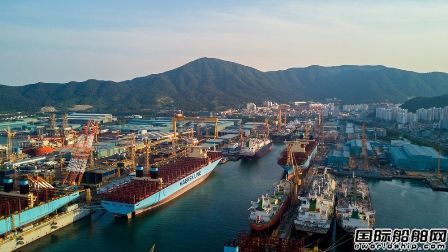
A source in the Korean shipbuilding industry said: "Although it is said that some of the orders originally scheduled to be signed at the end of last year were postponed to the beginning of this year due to the impact of the new crown pneumonia epidemic, this is not the whole reason for the large increase in the number of orders received by Korean shipbuilders in the first two months of this year, Korean shipbuilders did receive orders much earlier this year. "
On the other hand, although the prospect of receiving orders is positive, but the Korean shipbuilding industry is still facing the problem of weak performance. The growth rate of Korean shipbuilding companies' share price is lower than the average increase of the main stock index of Korea Composite Stock Price Index (KOSPI). In fact, the performance of major Korean shipbuilding companies was generally poor in the fourth quarter of last year, because Korean shipbuilding companies undercut orders with very low profit margins, making it difficult to improve profitability.
Another task for the Korean shipbuilding industry is to revitalize small and medium-sized shipyards. South Korea shipbuilding industry polarization is quite obvious, according to the South Korean Export-Import Bank data, last year, South Korea's seven medium-sized shipbuilding enterprises to receive orders for only 14 500 million U.S. dollars, almost only one eighth of the 3.9 billion U.S. dollars in 2010 to receive orders. Some Korean medium-sized shipbuilding enterprises are likely to have difficulty in maintaining operations this year, and the collapse of medium-sized shipbuilding enterprises will cause huge losses to the Korean shipbuilding industry.
The Export-Import Bank of Korea concluded that the Korean shipbuilding industry has experienced a long recession in the past decade, and now the industry is finally seeing a new turnaround, with cargo volumes expected to increase significantly after the end of the epidemic and stricter environmental regulations that will bring more demand for new ships. The South Korean shipbuilding industry is ready to adapt to the changing industry environment in the future and hopes to seize the opportunity to revive the industry.
